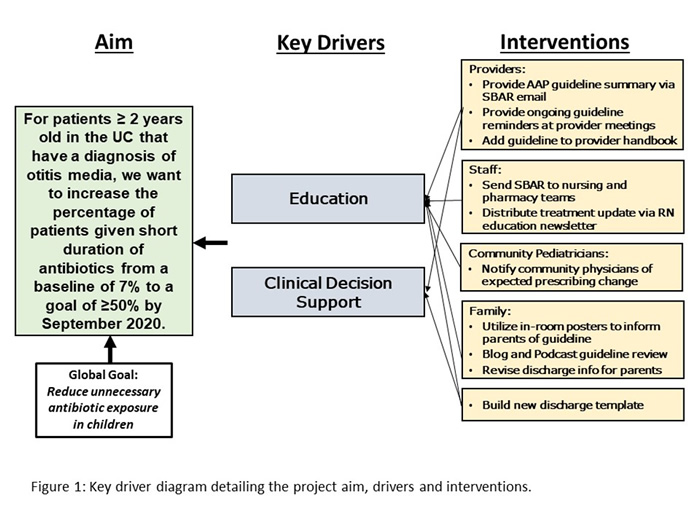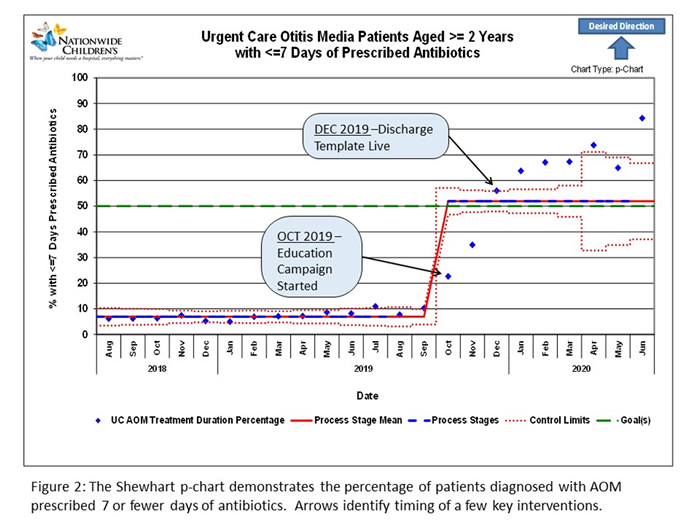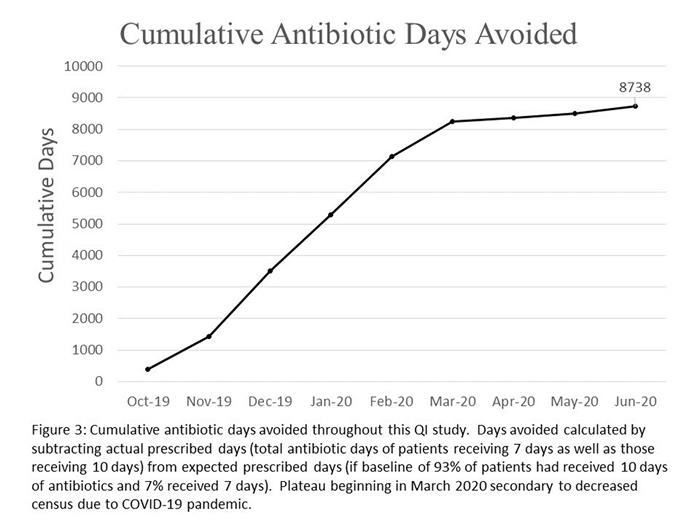A Multifaceted Quality Improvement Approach to Increase Adherence to Acute Otitis Media Treatment Duration Guidelines
1Uhl B, 2Boutzoukas A, 1Gallup N, 1Patrick M, 1Stultz J, 1Porter C, 1Watson J
1Nationwide Children's Hospital, Columbus, OH, United States; 2Duke Children's Hospital, Durham, NC, United States
Introduction: Acute otitis media (AOM) is the second most frequent reason for pediatric urgent care (UC) visits and the most frequently cited indication for pediatric antibiotic prescriptions. The American Academy of Pediatrics (AAP) AOM guidelines recommend no more than 7 days of antibiotics for patients > 2 years with non-severe AOM but many studies document poor compliance with these guidelines. Our aim for this Quality Improvement (QI) study was to improve guideline adherence by increasing the percentage of patients (>=2 years) with AOM who received a short duration (<=7 days) of antibiotics from our baseline of 7% to a target goal of > 50%.
Methods: This QI study was conducted in a high-volume network of 7 UC sites affiliated with a large academic children's hospital. Our interventions focused on key drivers of education and clinical decision support (CDS) (Figure 1). We started with a multifaceted education campaign targeting providers, nurses, pharmacists, community pediatricians and families. Next, we implemented an electronic health record discharge template that defaulted to 7-day duration of antibiotics for patients >=2 years diagnosed with AOM with a manual override available if indicated. Our outcome measure was the percentage of patients >=2 years with AOM receiving <=7 days of antibiotics and was monitored monthly using a Shewart p-chart with statistical process control methods used to track improvement over time. The process measure was the percentage of antibiotic prescriptions originating from our discharge template. A repeat visit for AOM within 30 days from the initial visit was our balancing measure.
Results: The percentage of patients diagnosed with AOM receiving a short antibiotic course increased from a baseline of 7% to a new process stage mean of 52% exceeding our goal and continues to trend upward (Figure 2). Our study resulted in 8,738 antibiotic days avoided and a 20% overall reduction in days prescribed (Figure 3). Repeat visits for AOM within one month of the initial visit did not increase.
Conclusions: Through education and CDS, we improved adherence to AOM treatment duration guidelines and increased antibiotic stewardship in a busy UC network without increasing treatment failures.



JOIN OR RENEW WITH SPUC TODAY!
PLAN NOW!

SPUC's 7th Annual Conference
Brought to the learner in virtual format
_____________
Committee Opportunities
Want to make a difference in our developing specialty of Urgent Care Pediatrics?
Join a SPUC Committee or workgroup!
 Winter 2021
Winter 2021

